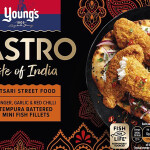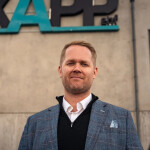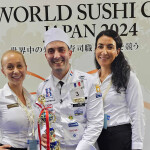The years that have followed Lerøy Seafood Group’s 2017 acquisition of fishing company Havfisk and whitefish processor and distributor Norway Seafood in 2017 have been “interesting” and “a little bit more challenging” than Lerøy CEO Henning Beltestad thought they would be at the outset, but he said at the 2023 North Atlantic Seafood Forum (NASF) the journey has been “fantastic” and there remains “huge potential in this part of the value chain.”
Today, alongside its salmon-farming business, the fully integrated company has a wild-catch segment that comprises Lerøy Havfisk – Norway's largest fishing company, which owns and operates 10 trawlers and has 10 percent of the Norwegian whitefish quota, and Lerøy Norway Seafood, which has 11 factories and takes catches from more than 600 fishing vessels.
Its own annual catch volume stands at around 72,000 metric tons (MT), mainly comprised of cod, haddock, saithe, and shrimp.
The company is targeting NOK 50 billion (USD 4.8 billion, EUR 4.4 billion) in revenue by 2030. But by 2025, it hopes to harvest 205,000 MT from its fishing operations and achieve earnings before interest and taxes (EBIT) in excess of NOK 500 million (USD 47.9 million, EUR 44.2 million) from its wild-catch segment, according to Beltestad. In 2022, its wild-catch EBIT was NOK 347 million (USD 33.2 million, EUR 30.7 million).
“That [2025 date] is not too far ahead so we have to run. We have to be fast,” he said. “But we have done a lot, and we are in a good place for achieving that.”
In addition to installing upgrades on its catching vessels, Lerøy has invested heavily in its processing factories, most of which are in northern Norway. That will continue in 2023 with a new NOK 200 million (USD 19.2 million, EUR 17.7 million) investment planned for its Båtsfjord factory, mainly to enhance its automation.
Having Norwegian raw materials and Norwegian processing is important for Lerøy’s customers and for the company itself, Beltestad said.
“The wild-catch segment has a lot of opportunities, which will give our company more strength out in the market. To be a total supplier of seafood, with wild catches of whitefish [and farmed salmonids], is extremely important for our customers and makes us uniquely positioned,” he said. “We were not experts in whitefish, but to bring this category up to the level that we are at with salmon today means we have to work a lot with innovations and product development, making all the whitefish species available in supermarkets and other segments. We have been working hard on that – building the demand for our products.”
Beltestad said the dynamics of the whitefish and salmon markets are very different from each other and pose very different challenges. Whitefish prices have been on a positive growth trend going back to 2017, with “top prices” achieved in 2022 for cod and haddock, alongside a more-stable price position for wild-caught shrimp, he said.
Now is also a good time to get behind Alaska pollock, American Seafoods Group CEO Einar Gustafsson said at ....
Photo courtesy of Jason Holland/SeafoodSource








